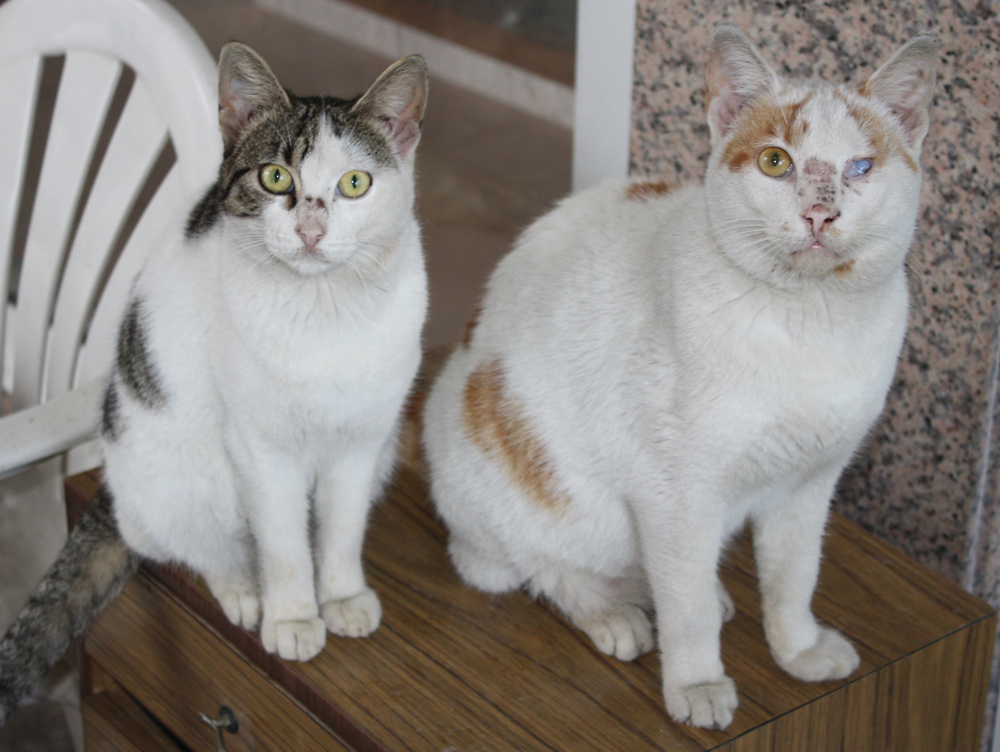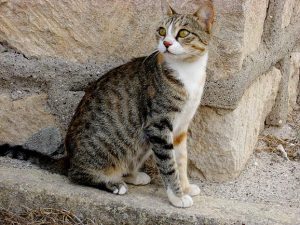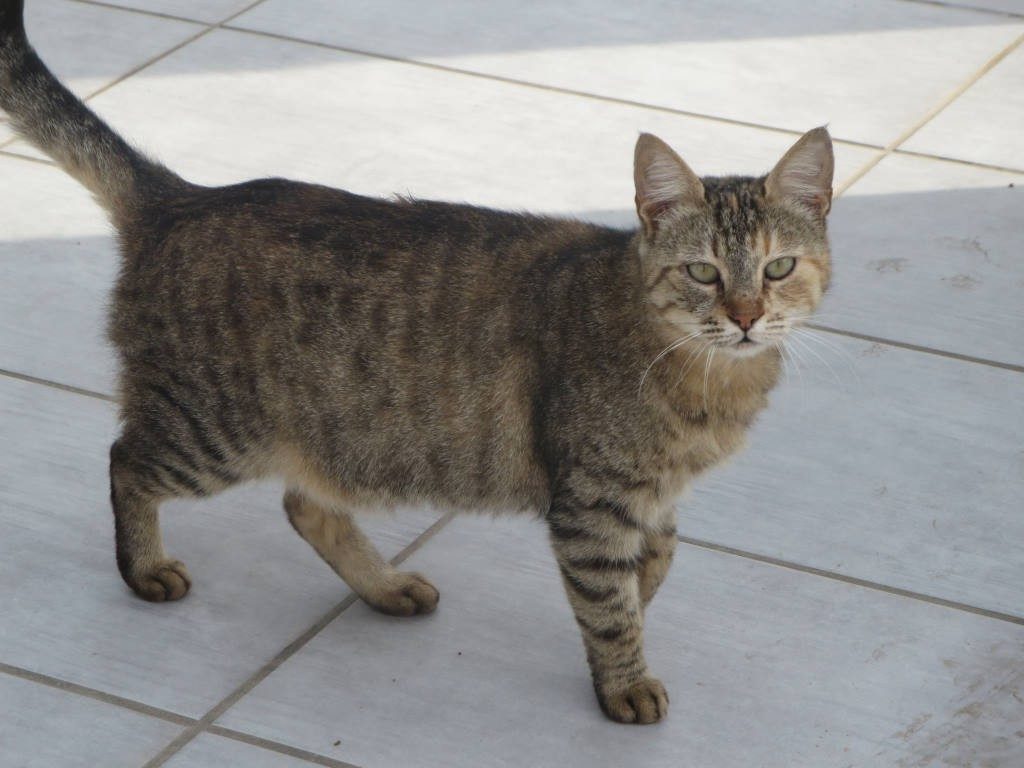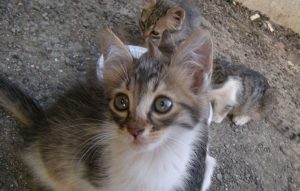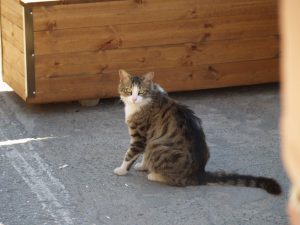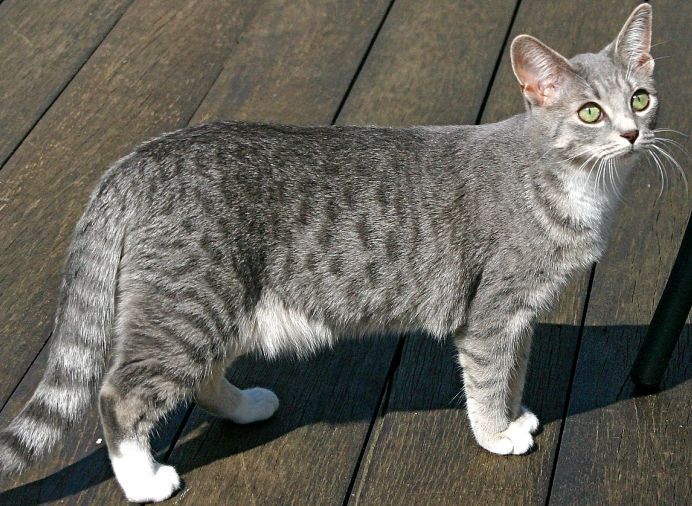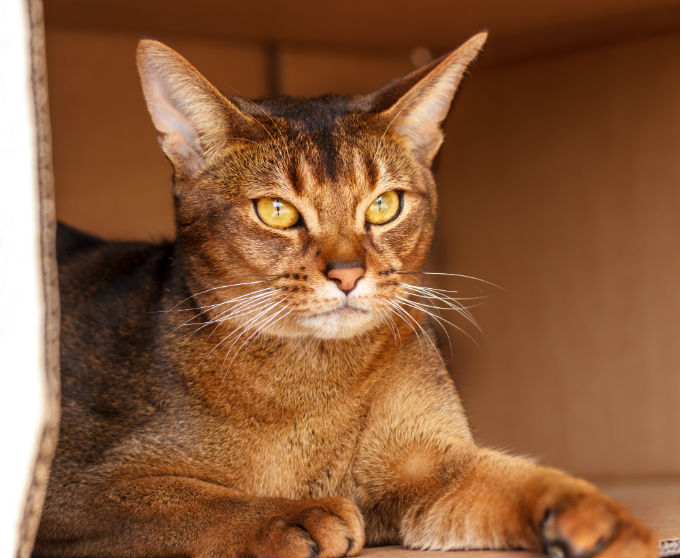Cyprus Cat
The Cyprus Cat is an ancient breed of landrace cats that are said to be inhabiting the island of Cyprus for at least 4000 years. Considered to be one of the largest cat breeds, their population is currently dwindling. Nevertheless, they are spread all across the island, from the coastal to the mountainous regions, or from the warm to the cooler areas. In some places, large populations of this feline have become feral.
Quick Information
Physical Appearance & Size
| Size Category: | Large |
| Body Type: | Has a strong-boned, well-defined body with a broad neck and a long back; the face is somewhat triangular, studded with almond-shaped eyes; the length of the tail varies between individuals; legs and paws are stoutly developed |
| Weight: | Male: 10 – 16 pounds; Female: 8 – 14 pounds |
| Height (Size): | Medium to Large |
Colors & Patterns
| Eye Color: | Any color |
| Coat Type: | Dense, smooth, long, short |
| Coat Colors: | Cinnamon, Chocolate Lilac, Fawn |
| Coat Patterns: | Mink, Colorpoint, Tabby, Striped Tabby |
| Tail Type: | Both long and short |
Other Characteristics
| Other Names/Nicknames: | Cypriot Cat, Aphrodite |
| Life Expectancy (Lifespan): | 12-15 years |
| Characteristics/Qualities: | Loving, Calm, Social, Friendly, Playful, Interactive, Curious |
| Lap Cat: | Yes |
| Shedding: | Moderate |
| Good with Children: | Yes (usually 6+ years old) |
| Good with Pets: | Yes (including dogs) |
| Vocalization/Noises: | Low |
| Hypoallergenic: | Yes |
| Attention Seeker: | Yes |
| Country of Origin: | Egypt or Palestine (developed in the Republic of Cyprus) |
| Availability: | Common (in their range) |
| Competitive Registration/Qualification Information: | Not registered |
History and Development
From the 4000-year old archeological remains of a cat interred along with its master and unearthed in 2004 in Cyprus, many researchers have come to the opinion that this breed is the oldest of the domestic cat breeds.
Innumerous Byzantine legends narrate a popular legend as to how St. Helen saved her monastery, infested by venomous serpents, by importing hundreds of Cyprus cats in the 4th century AD from Egypt or Palestine. The monastery had two bells – one of which was used to call the felines for their meals, and the other one was rung to direct them to go the fields for hunting down snakes (and vermin). Having an unusual association to felines, the monastery also got a strange name – St.Nicholas of the Cats Monastery.
At present, the Cyprus Cat is not registered or recognized by any major cat fancier or breeder organization since it is not considered as a breed by itself, but a descendant of the ancient Egyptian cats.
Temperament and Personality
- Highly adaptable and hardy due to the nature of their early existence
- Quite sociable, mixing with other pets (including dogs) and strangers in a friendly manner
- As an attention-seeker, enjoys each moment spent with its owner, following his footsteps
- Though not too active, loves playing with everyone, including children
- Not very vocal
- Has high inquisitiveness along with a moderate level of intelligence
Who is the Cyprus Cat Good For
- Those who love caressing their cats on their laps (lap cats)
- Owners who have a relatively larger family (consisting of kids and other pets)
- People who enjoy spending their leisure time playing with pets
- Those who do not like talkative pets
Care
Shedding is moderate. Groom the Cyprus cat 3 to 5 times a week so as to enhance blood circulation as well as keeping the coat free from dirt and debris.
The Cyprus cats have no breed specific health conditions or illnesses. You just need to be aware of the common feline issues, since some incidents of diarrhea, fleas, feline lower urinary tract diseases have been reported.
Are they Easy to Train
Since this cat loves staying at its whims and has a strain of independence, training might not be too easy initially. But since it is considerably intelligent and has a strong fondness for its owner, it won’t take long for it to pick up tricks. But the cat expects your company during training, along with a little cuddle and some treats.
Diet/Feeding
Premium brand dry kibble for cats is sufficient to keep your cat happy and healthy. Raw fish and meat (both red and white) are also suitable for this breed.
Interesting Facts
- Nobel Laureate Greek poet and diplomat Giorgos Seferis composed a poem ‘The Cats of St. Nicholas’, giving reference to the Cyprus cat breed.

